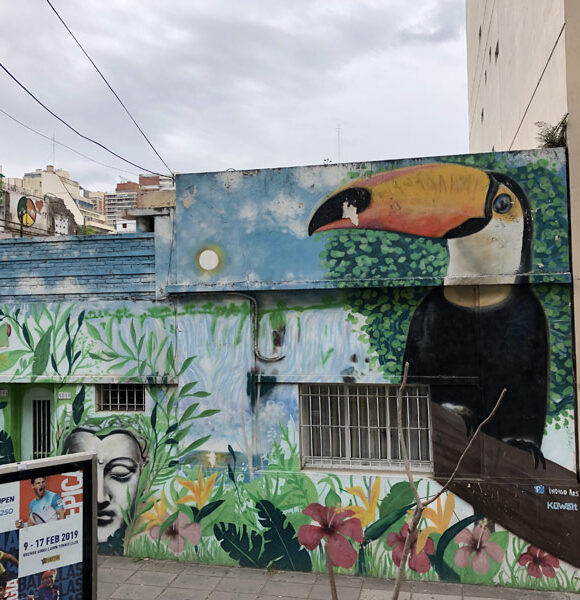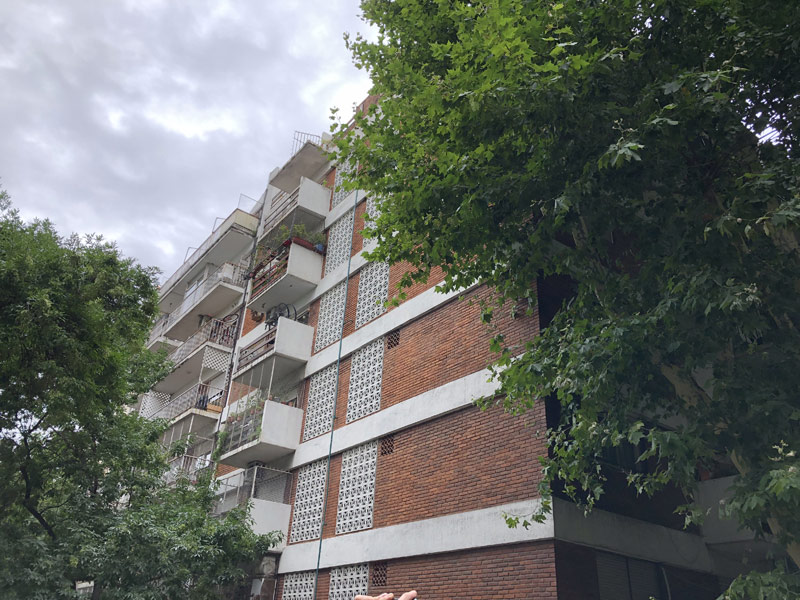Painting The Town Red, Buenos Aires
Art and architecture have a distinct place in this aging city, telling its stories, struggles and triumphs on its streets. Buenos Aires or Baires as called by the porteños (local inhabitants meaning ‘living at the harbor’) is rated as the most visited city of South America. A walk through the barrios tells us why.
Founded in the 16th century by the Spanish, the city today is conceived as neighbourhoods or barrios, an extension of the catholic parishes (parroquias). Palermo the city’s largest district is divided into various official barrios. A stroll here or drive through other precincts of this large vibrant yet languid city is a delightful experience of design. To be engaged in unexpected, animated dialogue, the camera is best left behind. The art, can we even call this graffiti (there is nothing clandestine or illegal about it, rather the contrary) punctuates street corners, blank facades, walls of stadia, shop windows as stickers, eateries, ‘carwash and coffee’ joints and all possible kinds of buildings. Cinematic creatures greet you from plaster marching alongside current or dated political activists. The artists need the permission of owners before painting which makes this a collaborative venture with little interference from the municipality. French, Spanish, Italian styles, coexisting alongside art deco, art nouveau and neo gothic, the architecture along the streets is eclectic reminiscent of colonial cities, European, yet tropicalized, contrasting and at the same time comfortably adjusted with the other.


In the midst of this organized chaos, a subtle hand at work deftly punctuates the streetscape with beautifully conceived, completely different red brick inserts. Along neighbourhood streets these are residential buildings built by different architects and at times completely different in their details, style, setback yet all using exposed red brick for their exterior. Every street has an exposed brick house or two popping up. Whether this was by design or just a fashion choice for the time these red brick facades are all well designed and detailed elevations and seem to be not more than a few decades old or even more recent. A similar trend is noted in the lower floors of commercial establishments using exposed red brick facades as a statement.
These innocuous brick structures popping up amongst the aging gems along a planned city highlight the significance of design by, for and of the people. Having a basic set of materials and some stipules relating to volume and façade control in place, and giving freedom of expression through art many of our cities can ensure that an eclectic streetscape ensures vibrancy without being pushed to severe order to ultimate chaos. Though the design varies one from the other, the detailing and construction is sensitively done with simplicity, variety and quality exercising certain restraint to jell into the overall city form.
A visit through Baires inspires a simple way forward for many cities that were once beautiful but where the common architecture has now lost its sheen and is actively seeking revitalisation.
# I spy with my landscape eye
#Culture, context, common sense
Reference: Wikipedia



